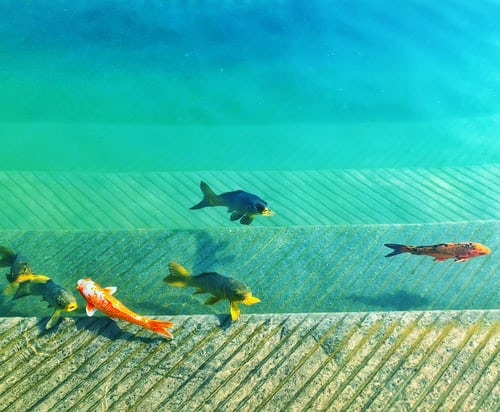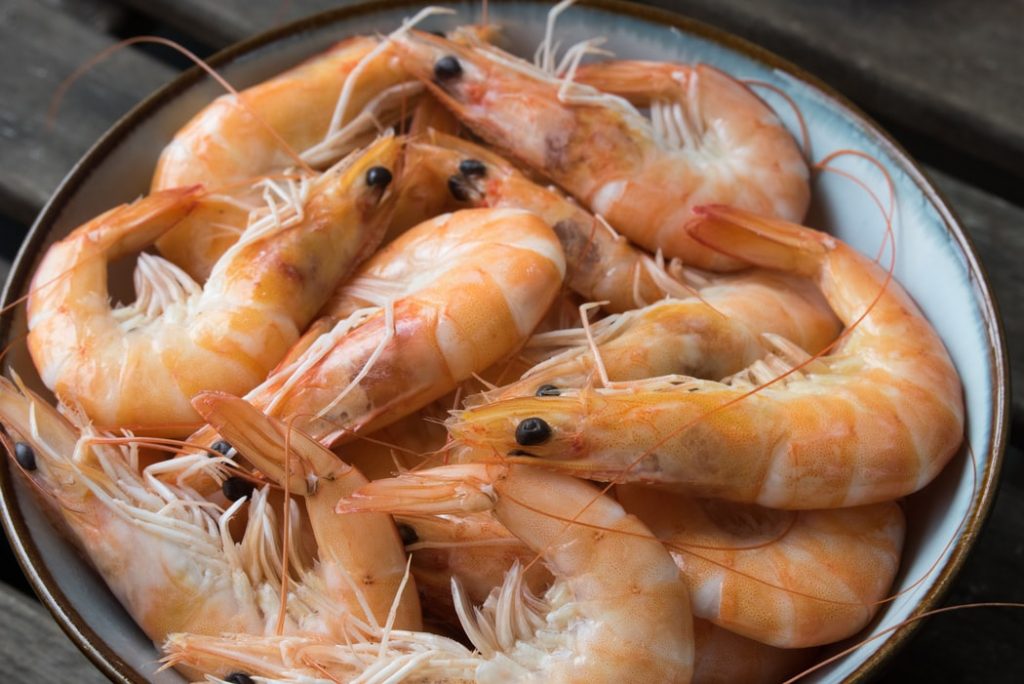When the government declared an enhanced community quarantine (ECQ) in Metro Manila on March 16, 2020 because of the new coronavirus, we suddenly found so much idle time at home. For the fish caretaker, this is a good time to focus on the aquarium.
However, while time is of abundance during the ECQ, our resources are not, as purchasing new items can be rather difficult during the quarantine. We need to be smart as we care for our fish while we responsibly stay at home.
Most limited resource
Just like the most of us, the most important resource – which, unfortunately, is also the most limited – is food. With fish shops closed in the metro, restocking on fish food would probably be difficult. Therefore, this is the time to conserve on fish food.

Fortunately, fishes need not eat three times a day like humans do. It is highly recommended to feed them less to ensure there is enough until stocks are replenished. Feeding once a day or every other day is highly recommended. Fishes do not eat daily in the wild; on some days, they even go through long spells without food. Doing this can be a matter of their survival.
Because of the uncertainty on when we can finally restock fish food, this is also an opportune time to look for alternatives. The ECQ may have closed down fish and pet shops, but it certainly kept the food markets open where we can buy food otherwise meant for humans that can be used for our fishes.
Meat on the menu
For carnivorous fishes, meaty food like fish, shrimp, mussels, crabs, squid, alamang, chicken, and other fresh meat may be adequate. Simply buy extra for them when you go shopping for your own needs.

Rinse and cut these into bite-sized pieces. Store any extras in the freezer. It is recommended to feed just a little when offering fresh food because they tend to rot faster in the water, unlike commercially prepared food.
Tawilis
Fresh fish from the market would be my number one choice, specifically tawilis. The tawilis we buy in public markets is not exactly the rare freshwater species Sardinella tawilis from Taal Lake, which is now endangered. Rather, it’s the saltwater variety.
Tawilis does not pollute the water as much as dilis and galunggong do. The flesh is quite hardy yet soft enough to cut with kitchen scissors. I simply rinse and offer them whole to large predatory fishes, or cut to bite-sized portions for smaller ones. Of course, practically any fresh fish from the market is fine fare, As long as they are cut into the right size.
Shrimp
Shrimp is a very good food alternative, albeit a bit pricy. Preparation can be a bit difficult because of its exoskeleton.
Depending on the fish to be fed, the exoskeleton can either be retained or removed. For arowanas, it is said that the exoskeleton has a lot of carotene, and carotene is said to be a natural color enhancer that makes Arowanas redder in color.
Stingrays don’t eat the exoskeleton, so I recommend that the exoskeleton be removed altogether.
Lastly, remove the head of the shrimp. Its spine can injure the fish. Since the head also has a lot of fat, it can rot faster and raise ammonia levels in the tank.
Crab
Crabs may be offered, although it may be too much work to remove the flesh from the shell. However, pufferfishes, can bite through its hard exoskeleton. Simply cut a sizable piece of crab and toss in the tank, shell and all. It is even recommended to offer crabs and other “hard” food to pufferfishes to keep their teeth from growing too long, which renders these useless.
Tahong
Mussels or tahong needs a little more preparation than others because it is hard to pry open their shells. However, pouring boiling water on them opens the shells so that the meat can easily be picked off.
With kitchen scissors, cut the meat into bite-sized portions. Extra portions can be placed in bags and stored in the freezer.
Chicken
Chicken breast fillet may be used in case fish if the other seafood are not available. Simply rinse and cut to size.
Plant-based offerings
For herbivorous fishes, there are many vegetables they can consume. Choosing the right one depends on the species of fish.

Green leafy veggies
Algae-grazing cichlids, such as the members of the genus Tropheus; Malawi Cichlids belonging to the group Mbunas; South American herbivorous cichlids from the genera Heros, Uaru, and Hypselecara; large cichlids of Central America of the genus Vieja; and the three species of Asian Cichlids of the genus Etroplus may be offered green leafy vegetables.
Rinse fresh leaves of regular or Baguio pechay and hang with a veggie clip along the side of the tank, or just dangle with a string. These cichlids will strip the leaves in no time.
Pumpkin
I know of somebody who offers chopped pumpkin to his West African Lungfish (Protopterus annectens annectens). Those caring for lungfish claim that offering vegetable to these prehistoric fishes prevents them from developing craters in their faces, which is said to come from a high protein diet.
Peas
If you have frozen mixed veggies in the freezer, you may pick off the green peas and offer to your goldfish. Rinse and pinch the green peas until the flesh of the cotyledon separates from the skin. Greens are recommended to goldfish with swim bladder problems.
Mixed veggies
Among the veggie eaters, the most popular are the Plecos, or the catfishes that belong to the Loricariidae family. While some species are carnivorous, a big majority are herbivorous. There are many vegetables perfect for them, such as squash, pumpkin, cucumber, zucchini, eggplant, avocado, patola, okra, and papaya. Other vegetables can also be given, such as regular and Baguio pechay, lettuce, cabbage, spinach, broccoli, cauliflower, and kangkong. They may also be given root vegetables like carrots, potatoes, kamote, sayote, and singkamas.
These maybe given fresh or blanched. They are best weighed down since Plecos are more comfortable at the bottom rather than the top of the tank. One effective way of doing so is by stabbing the vegetable with a fork and placing it at the bottom of the tank. Just make sure you return the fork before your mother finds out!
Most extensive resource
During the ECQ, the most extensive resource we have is time. We don’t need to wait for the weekend to do all our aquarium chores. If you used to be pressured into finishing all aquarium chores during the weekend, you can now accomplish them any day of the week. It is therefore wise to stretch your usual two-day chores to span seven days.
Changing the aquarium water
One of these chores, which for me is also the most important, is changing the water. It is a standing rule to change 50% of the water once a week. I then recommend that this errand be spread throughout the week. For instance, do a 20% water change every two days.
Changing the water in smaller increments but more frequently is better, as it is safer for the fishes, what with water parameters not changing drastically this way. By the weekend, you will have replaced 60% of the water instead of just 50%.
Doing backlog
With tank maintenance now on a new schedule, the lockdown should provide a weekend you can set aside for other things you’ve been meaning to do for ages. Throw away broken powerheads, busted air pumps, empty fish food cans, expired fish food and medicines, and busted fluorescent lamps. Gather, clean, and store aquarium accessories that won’t be needed during the warmer summer days, and excess accessories like airstone, air hoses, and pumps. Rinse and set aside décor materials like sand, driftwood, and rocks which you may use for later.
Starting a project
Weeks into the lockdown, beat boredom by starting a project that makes use of materials you already have. If you’ve already fixed the aquarium, I bet you have décor materials at hand, such as sand, driftwood, and rocks. It’s time to take these materials out of storage.
Rinse the sand or gravel thoroughly as they need to be clean before being added to a tank. Scoop some into a container and pour slowly, avoiding jerky movements so as not to scare the fishes. Pour the sand or gravel as close to the bottom of the tank as possible so as not to cloud the water.
Clean and brush the driftwood in running water. Facing the tank, position the driftwood on the floor before you include it in the tank. You don’t want to move a large driftwood in the tank with fishes in it because this will spook the fish, which may even cause them to jump out. Set the driftwood inside the tank only after deciding on its final position.
Get the rocks and use to highlight the driftwood in an aesthetic way. If you have live or artificial plants, use these as decoration as well.
Enjoying the company of fishes
With so much time on your hands, why not spend more time enjoying the company of the fishes? After you’ve done a lot to improve tank conditions, it’s about time you took a few pictures and videos and posted these to your favorite fish group page.
Fishes are your friends
Boredom is something you have to contend with during the ECQ. Luckily, you share the company of wonderful fishes! Caring for them and keeping them entertained helps you make good use of your time as you try to stay safe during the pandemic.
This appeared in Animal Scene magazine’s May-June 2020 issue.
You might want to read:
– Seeing red: Dominant red-colored fishes
– Project: Goldfish nook
– Those dazzling damsels






